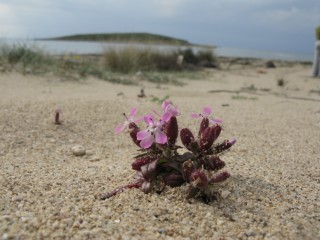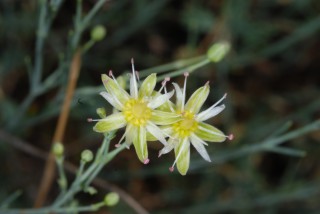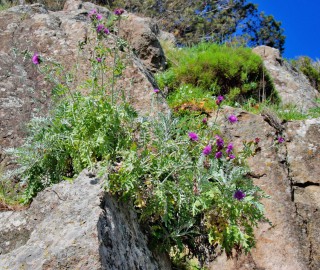In 2005, the Mediterranean Islands Plant Specialist Group (IUCN / SSC) published The Top 50 Mediterranean Island Plants - Wild plants at the brink of extinction and what is needed to save them; edited by Montmollin, B. de and Strahm, W. (downloadable in English, French, Spanish and Greek under the Download tab). A decade later, the publication has been updated to assess any changes that may have occurred in the conservation status of these 50 taxa and to see what measures have been taken to improve their conservation status
This revision required the participation of over sixty specialists and was coordinated by Salvatore Pasta with the assistance of Aline Perez-Graber and Laurence Fazan. The new species sheets are presented on a website prepared by Joaquim Perez.
The species sheets of the 2005 publication have been reproduced and the different sections have been updated, adapted and supplemented to reflect the current knowledge on the studied species. To facilitate comparison between the 2005 publication and the current update, the original name of each taxon has been retained, although in some cases, the names have changed. Possible taxonomic changes are explained in the synonymy section and in the text.
The main results of this review are as follows:
Almost half of the taxa (22) have a modified level of threat compared to the 2005 assessment. 21 taxa have a lower threat level and only one has a higher one. This is the case of Lysimachia minoricensis which is now considered as Extinct in the Wild (EW), since all attempts to reintroduce this species into its natural environment have failed and living collections are found only in botanical gardens or seed banks.
The decrease of threat level for 21 taxa can be related to a number of factors:
- In many cases, new subpopulations have been discovered or additional individuals have been counted.
- In some cases, the amount of threats has decreased, often because of conservation measures taken since 2005.
- A stricter application of the IUCN Red List criteria has been made, including the use of quantitative indicators to better understand the evolution of individuals and populations since the last assessment.
In conclusion, although the improvement in the threat level for nearly half of the taxa is in itself encouraging, it does not reflect solely a real improvement in the conservation status of these species, but in some cases, is due only to an improvement of the knowledge of the taxa. The 2005 publication certainly contributed to better study and protect these taxa. In many cases, the conservation measures implemented have stabilized or improved the situation. However, all these species are still threatened with extinction and efforts to conserve them must continue. Climate change, a threat that was still somewhat theoretical in 2005, is becoming more evident and the mitigation of its effects on very localized species represents an important challenge.
This update is a team effort which has required the active contribution of many people whom we sincerely thank:
ANDREOU Marios, BACCHETTA Gianluigi, BIBILONI Gabriel, CHRISTODOULOU Charalambos S., COGONI Donatella, CRESPO Manuel B., CURSACH Joana, DELIPETROU Pinelopi, DIMOU Dimitrios, FAZAN Laurence, FERAL Camille, FENU Giuseppe, FOGGI Bruno, FORTEZA Vicens, FOURNARAKI Christina, FRAGA I ARGUIMBAU Pere, GARCIA Oscar, GARFI Giuseppe, GIANGUZZI Lorenzo, GRADAILLE Pep Lluis, GUIDI Fabio, HUGOT Laetitia, IATROU Gregoris, JAGEL Armin, JUAN Ana, KALTSIS Apostolis, KOUTSOVOULOU Katerina, KOZLOWSKI Gregor, KYPRIOTAKIS Zacharias, LA MANTIA Antonino, LAGUNA Emilio, LANFRANCO Edwin, LANFRANCO Sandro, Lo CASCIO Pietro, MANOCCI Mario, MANZANO Xavier, MATTANA Efisio, MIFSUD Stephen, MORAGUES Eva, MOTA POVEDA Juan Francisco, MUS Mauricio, NEVADO Juan Carlos, PANITSA Maria, PARADIS Guilhan, PASTA Salvatore, PEREZ GRABER Aline, PEREZ Joaquim, PIAZZA Carole, RITA Juan, ROMANO Salvatore, SAEZ Llorenç, SCHWARZER Hedwig, SCUDERI Leonardo, STEVENS Darrin T., TRIGAS Panayotis, TROIA Angelo, VENTURELLA Giuseppe, ZERVAKIS Georgios
Bertrand de Montmollin, Chair, Mediterranean Plant Specialist Group (IUCN/SSC)



